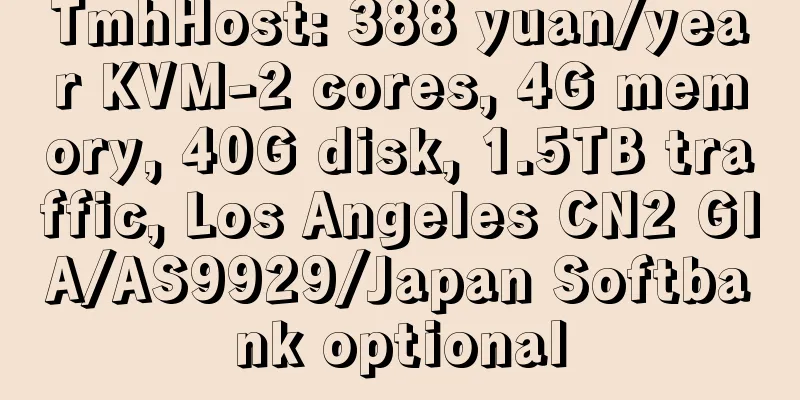A Preliminary Study on Kubernetes Network Concepts

|
Kubernetes network is a core concept in Kubernetes. In short, the Kubernetes network model ensures that all Kubernetes pods on the cluster can communicate. In addition, based on the Kubernetes network model, Kubernetes has other core concepts, namely Kubernetes Services and Kubernetes Ingress.
In this article, we will explore Kubernetes networking using a system model approach. We will develop a simple model to understand container-to-container communication and Pod-to-Pod communication. How to view the networkNetworking is undoubtedly a vast and complex field that requires years of theoretical and practical experience to master. In this article, we will review networking at a conceptual level without going into implementation details. Ideal network modelThe above diagram describes a network as a Network Graph, which consists of a set of nodes and links between nodes. A node can exchange information with another node if and only if there is a connection between the nodes. Message exchange frameworkA node, the source, exchanges messages with another node, the target, by placing messages on the target's input queue. The message exchange is represented by a Send Event, Send·M, observed by the source node and a corresponding Receive Event, Recv·M, observed at the target node. Message exchange behaviorA node in a network is either a process or a switch. A process generates and consumes messages, and a switch processes messages according to its forwarding information base (FIB). Forwarding Information Base (FIB) of S1 and S2The figure above describes the forwarding information base (FIB) S1 and S2 of the switch. When receiving a message, each switch will query its forwarding information base to decide whether to send (deliver), forward (forward) or discard (discard) the message. Switch:
Kubernetes Network ModelThe Kubernetes network model is a descriptive network model, that is, any network that meets the Kubernetes network model specification is a Kubernetes network. However, Kubernetes does not specify how to implement the network model. In fact, there are many alternative implementations on the market, called network plugins. This section describes the Kubernetes network model using a set of constraints on message exchanges. Constraints: Network-addressable entitiesThe Kubernetes network model defines three addressable entities: K8S pod, K8S node, and K8S Service. Each entity is assigned a different IP address.
However, the network model does not make any further claims about these IP addresses. For example, the Kubernetes network model does not make any further claims about the IP address space extracted from these IP addresses. Limitation: Inter-container communicationThe Kubernetes networking model requires that container C1 executing in the context of a Pod P can communicate with other containers C2 executing in the context of P over localhost.
Constraints: Pod to PodThe Kubernetes network model requires that container C1 executing in the context of Pod P1 can communicate with other containers C2 executing in the context of P2 through the address of P2.
Constraints: Process to PodThe Kubernetes network model requires that a process hosted on a node N, called Daemon D, can communicate with any container C executing in the context of a Pod P hosted on N through P's address.
Kubernetes Networking as a Network GraphThis section uses the Kubernetes Network Graph, an ideal model, to describe the Kubernetes network model. The following diagram describes the use case in this section: The Kubernetes cluster K1 consists of 2 nodes. Each node hosts 2 Pods. Each Pod executes 2 containers, one container listening on port 8080 and one container listening on port 9090. In addition, each node hosts 1 Daemon. We can model a Kubernetes cluster network as a Graph with a set of nodes and a set of links. nodeEach K8S container C is mapped to a network Process C
Each Daemon D is mapped to a network Process C
Each K8s Pod P is mapped to the network Switch P, the Pod's Switch
Each K8S node N is mapped to network Switch N, the node's Switch:
LinkEach container C will be linked to its Pod Switch P
Each Daemon D will be linked to its node Switch N
Each Pod Switch P will be connected to its node Switch N
Each node Switch N1 will be connected to other nodes Switch N2
In the forwarding information base of Pod SwitchP2 forwarding information base
In the forwarding information base of the node SwitchForwarding information base N2
ExampleThis section will explain the Life of a Message in the Kubernetes cluster network K1 through some examples. Container to containerContainer C1.1 needs to communicate with container C1.2:
Intra-node Pod-to-Pod communicationContainer C 1.1 needs to communicate with C 3.1:
Pod-to-Pod Communication Between NodesContainer C 1.1 needs to communicate with container C 2.1:
Daemon to Pod CommunicationDaemon D1 needs to communicate with container C 1.1:
SummarizeThe Kubernetes network model is a permissive network model, that is, any network that satisfies the constraints of the Kubernetes network model is a valid Kubernetes network. Mapping the Kubernetes network model to the Network Graph enables us to reason about the network at a conceptual level and skip a range of details required to reason at an implementation level. In subsequent articles, we will use this Network Graph to discuss Kubernetes services, Kubernetes Ingress, and Kubernetes policies. |
<<: What does service governance govern? 10 pictures tell you the answer
Recommend
What is DNS? Why are there only 13 DNS root servers? Is it really that difficult to give one to China?
The Domain Name System is one of the most importa...
Preparing for 5G: The three major operators are busy withdrawing 2G from the network
Domestic operators will launch 5G networks in 202...
Halfway through 2020: my country's 5G users exceed 100 million
Although we have not yet completely gotten rid of...
GSMA: China is expected to have 460 million 5G connections by the end of 2025
Recently, GSMA released its latest report "C...
Cloud services are becoming the dominant force in enterprise network traffic
Cloud services are accounting for an increasing p...
5G and IoT: Compatible with each other
5G is here! It’s hard to ignore the hype surround...
V2X communication: A new era of cooperation between vehicles and infrastructure
V2X communication, or vehicle-to-everything commu...
Computer WiFi is sometimes disconnected and sometimes not? How to solve the problem of unstable computer WiFi
Some time ago, I bought a new computer at home, a...
The overlooked hardware vulnerabilities in enterprise networks
Typically, hackers will gravitate to the weakest ...
Just now! ZTE Announcement: Affected by the rejection order, the company's main business activities can no longer be carried out!
On the evening of May 9, ZTE issued an announceme...
The threat of cyber espionage
[[192125]] The cyber espionage operation, now nam...
Biyouxue: Solve growing pains with software development cloud
Education is an eternal research topic, and its i...
How fiber optic networks can create more efficient and secure connections
We live in a technologically advanced age where h...
If only the Canvas tag is left
[[420999]] 1. Background If only the canvas tag i...
The development of 5G will open up a new track for the Internet of Things
The Ministry of Industry and Information Technolo...









